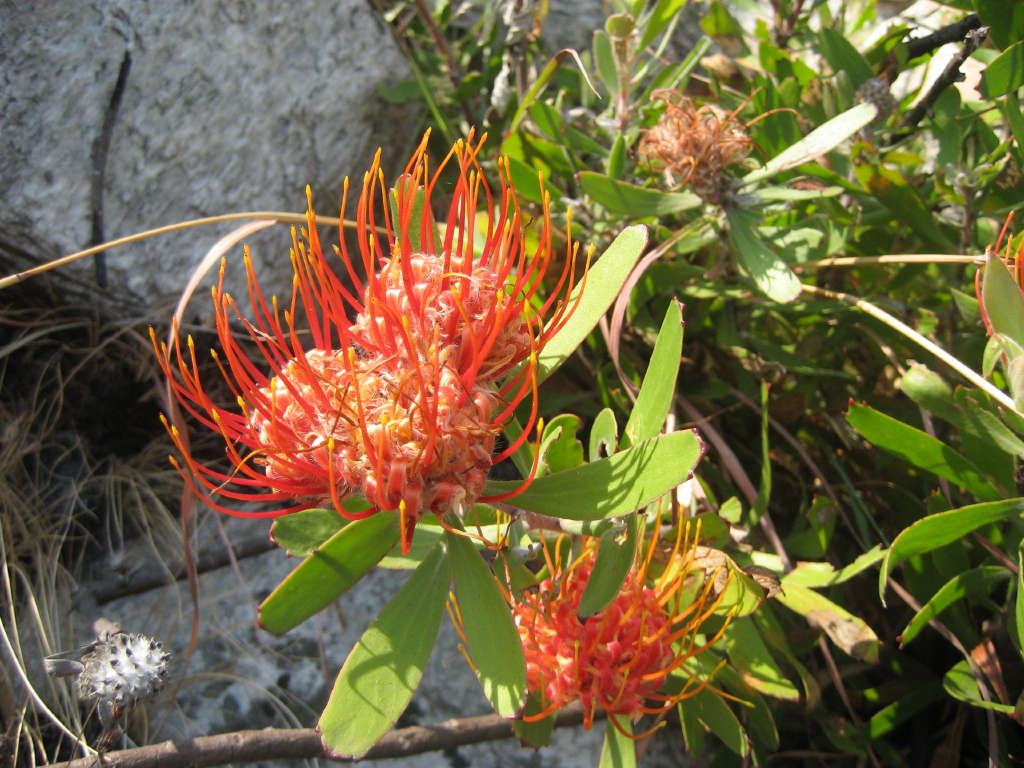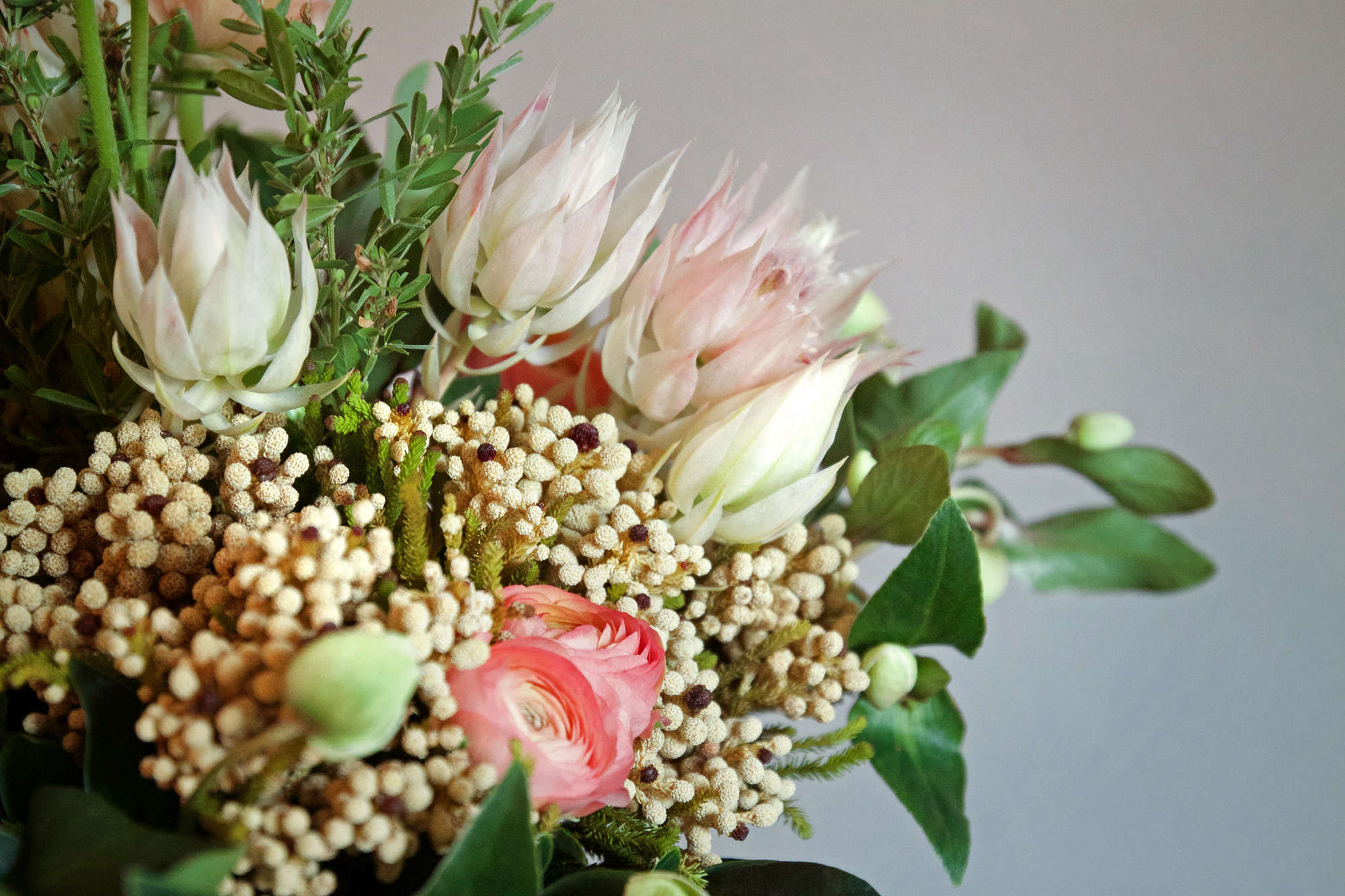Pincushion Protea, Leucospermum: “Flower Power “
Let’s get straight to the point—or pinpoint in this case: If you live in a warm climate, you need to grow Pincushion Protea if you crave a low-maintenance and evergreen tropical shrub that produces exotic flowers for bold arrangements. As a garden designer, I hope my enthusiasm and deep devotion to Leucospermum will be evident, but just in case I proclaim: I love this plant.
Above: Photograph by Malcolm Manners via Flickr. Yellow pincushion protea blooms in its native environment at Kirstenbosch Botanic Garden in Cape Town. For more, see 11 Garden Ideas to Steal from South Africa.
Now the bad news: on average this shrub lives only about eight years, but please overlook this fact and know that Leucospermums can be a dramatic and major focal point in your garden when in bloom.
Above: No explanation needed for how Leucospermum got its nickname, Pincushion Protea. But it just as easily could have been called Fireworks Protea. Photograph by Kier Holmes.
Above: Leucospermum saxosum grows in the wild in the mountains of Mozambique. Photograph by Ton Rulken via Flickr.
Cheat Sheet
- Pair Leucospermums with other dramatic-looking tropical plants.
- Extraordinary cut flower and long blooming.
- Evergreen and low maintenance.
Keep It Alive
- Plant Leucospermums in a sunny, frost-free and open spot—give it space for good air circulation. Pincushion Protea tolerates seaside conditions.
- Needs well-drained (but not too rich) soil.
- Drought tolerant once established.
- Pincushion Protea needs no fertilizer. Another bonus.
Above: Leucospermum is a good companion to succulents. Photograph by Jean via Flickr.
While most plants are barely waking up from their winter’s nap, Leucospermums bloom in late winter or early spring and last for months. To prolong the bloom season, you can regularly remove faded flowers. Luckily, most plants produce enough glorious flowers so you can leave some on the plant and cut some for arrangements without feeling guilty (like I always inevitably do).
Above: All it takes is one stellar Leucospermum flower such as this ‘High Gold’ variety to make a bold floral statement. Photograph by Kier Holmes.
Many different cultivars exist, and because of increased popularity there are some serious breeding programs in South Africa and Hawaii now producing amazing hybrids with disease-resistant characteristics. Cultivars range from bold ground covers to large shrubs, all possessing exquisite flower power.
N.B.: For more of our tropical favorites, see our Garden Design 101 guides:
- Planting, care, and design tips are included in Tropical Plants: A Field Guide.
- Looking to bring the tropics indoors? Read our Fiddle-Leaf Fig Tree 101 or Orchid 101 guides and choose one (or both).













Have a Question or Comment About This Post?
Join the conversation